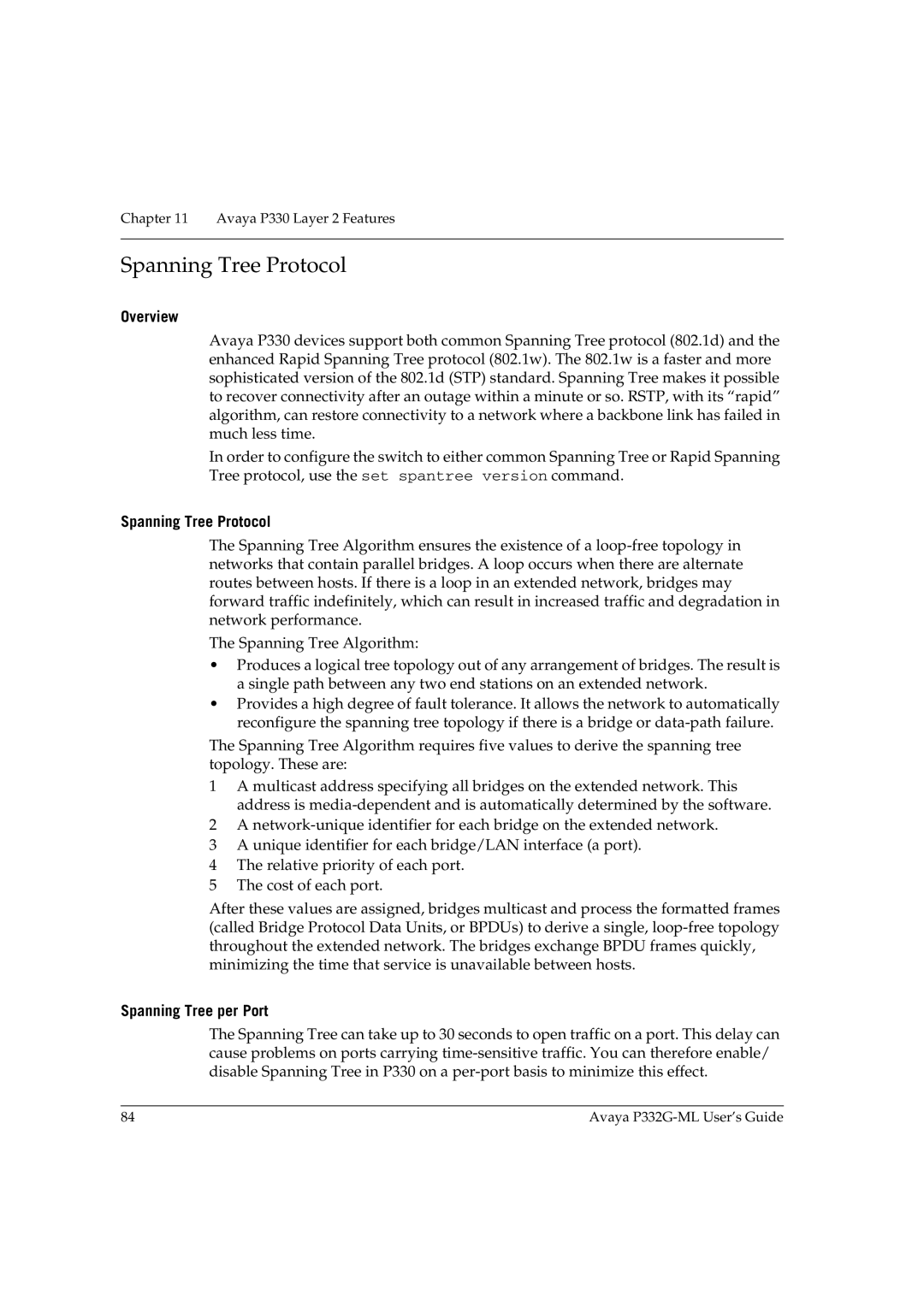
Chapter 11 Avaya P330 Layer 2 Features
Spanning Tree Protocol
Overview
Avaya P330 devices support both common Spanning Tree protocol (802.1d) and the enhanced Rapid Spanning Tree protocol (802.1w). The 802.1w is a faster and more sophisticated version of the 802.1d (STP) standard. Spanning Tree makes it possible to recover connectivity after an outage within a minute or so. RSTP, with its “rapid” algorithm, can restore connectivity to a network where a backbone link has failed in much less time.
In order to configure the switch to either common Spanning Tree or Rapid Spanning Tree protocol, use the set spantree version command.
Spanning Tree Protocol
The Spanning Tree Algorithm ensures the existence of a
The Spanning Tree Algorithm:
•Produces a logical tree topology out of any arrangement of bridges. The result is a single path between any two end stations on an extended network.
•Provides a high degree of fault tolerance. It allows the network to automatically reconfigure the spanning tree topology if there is a bridge or
The Spanning Tree Algorithm requires five values to derive the spanning tree topology. These are:
1A multicast address specifying all bridges on the extended network. This address is
2A
3A unique identifier for each bridge/LAN interface (a port).
4The relative priority of each port.
5The cost of each port.
After these values are assigned, bridges multicast and process the formatted frames (called Bridge Protocol Data Units, or BPDUs) to derive a single,
Spanning Tree per Port
The Spanning Tree can take up to 30 seconds to open traffic on a port. This delay can cause problems on ports carrying
84 | Avaya |
